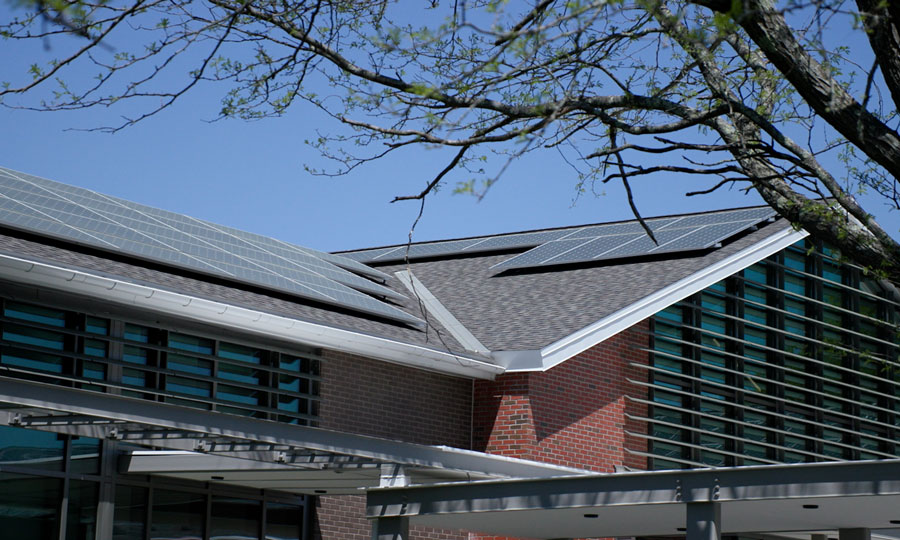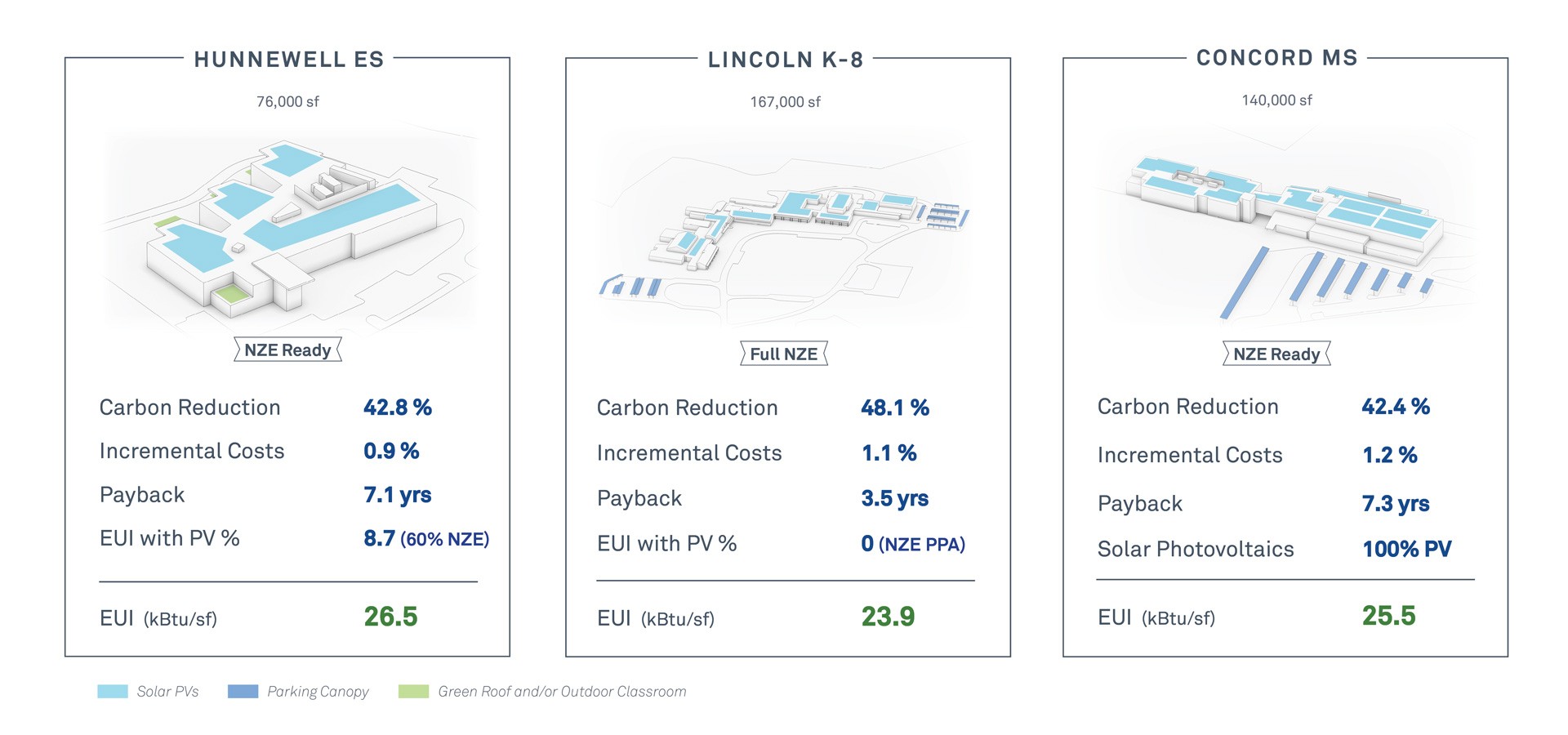Above: Three of our most recent net zero school designs in Massachusetts. Energy Use Intensity (EUI) is the headline measurement of the energy efficiency of a building's design and/or operation—the lower the better. NZE buildings typically have an EUI below 30.
Why Massachusetts Schools are Finally Embracing Net Zero Energy
There has never been a better time for K-12 schools to go net zero energy (NZE).
In Massachusetts, many school stakeholders have turned from net zero skeptics to fully-fledged advocates. In 2022 there were around 30 NZE and net zero ready school projects in various stages of design in Massachusetts, including six by SMMA.
A school building qualifies as NZE if it produces as much energy as it consumes (via on-site renewable energy) and does not use any fossil fuels. NZE status can be confirmed by analyzing utility bills and data recorded by the school’s HVAC systems after one year’s use.
Most headlines around NZE focus on commercial developments such as offices, labs, and residential buildings. But K-12 schools have a major, if underappreciated, role to play in the drive toward carbon neutrality.

Above: The Lincoln School. Designed by SMMA and EwingCole, it is the first ever net zero renovation public school in Massachusetts
Why now?
In Massachusetts, environmental concerns alone do not explain the shift to NZE. Rather, net zero projects have become more affordable and feasible thanks to cheaper renewables, government cash incentives, and advances in sustainable design.
The financial case for NZE is stronger than ever. By using less energy, communities benefit from much lower operational costs over time. Today, for SMMA-designed net zero and net zero ready schools, the average “payback”—cost captured back through energy savings—is between seven and 12 years. Given these schools are designed and built to last at least 50 years, communities can look forward to a minimum of four decades of savings. This performance would not have been possible 10 years ago.
Communities across Massachusetts are taking note. In Concord, MA, we are designing a net zero ready middle school with a predicted payback of just 7.3 years. The Town was swayed by the prospect of the school’s utility bills showing major cost savings from Day One. And after breaking even in Year Seven, the school will enjoy a further 40-50 years of low energy use and costs.

